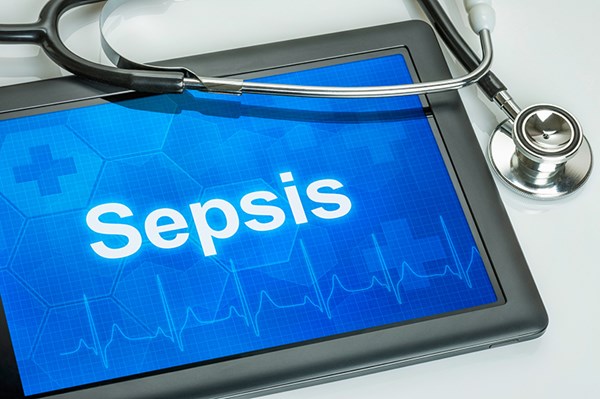Article
Pepper DJ, Sun J, Cui X, Welsh J, Natanson C, Eichacker PQ. Antibiotic- and Fluid-Focused Bundles Potentially Improve Sepsis Management, but High-Quality Evidence Is Lacking for the Specificity Required in the Centers for Medicare and Medicaid Service’s Sepsis Bundle (SEP-1)*. Crit Care Med. 2019;47(10):1290-1300.
OBJECTIVE
To review the current available literature on the Centers for Medicare and Medicaid Service's (CMS) sepsis bundle for performance measure (SEP-1) and address if its three quality measures made a difference in outcomes in patients with sepsis.
BACKGROUND
There has been much controversy over SEP-1, which recommends all patients with suspected sepsis receive antibiotics within 3 hours, all hypotensive patients receive 30 mL/kg fluids, and a second lactate measurement be obtained at 6 hours if initially elevated. CMS developed these measures to improve outcomes in sepsis, but many argue that the strict nature of these measures is unnecessary and can even be harmful. Compliance with reporting and adhering to these measures is required by CMS, and reports are made public, which influences where consumers spend health care dollars. The authors concluded that current studies support antibiotic and fluid-focused sepsis bundles to improve mortality, but there is no data to support the superiority of specific antibiotic time, specific fluid volume, or serial lactate measurements. They recommend that CMS revise SEP-1 to allow for more flexibility and allow clinicians to judge clinically how to approach treatment in sepsis.
DESIGN
- Systematic review of observational (before/after and concurrent case-control) studies
- Data extraction and quality assessment, data synthesis and analysis
- 15 publications observing 17 studies measuring survival for sepsis bundles
Inclusion Criterion
-
Studies comparing mortality between patients receiving a sepsis bundle versus not receiving a sepsis bundle including antibiotic and fluid administration, +/- vasopressor use
Exclusion Criterion
- Studies evaluating SEP-1 interventions no longer in the revised 2018 version
OUTCOME MEASURES
Effect of Bundle Treatment on Survival
-
Bundle treatment associated with a greater odds ratio of survival in 15 of 17 studies, with 9 reaching statistical significance
- Significant heterogeneity between studies
- Enrollment numbers used to stratify studies further revealed consistently increased odds ratio of survival in the 5 largest (1697 – 12486 patients, OR 1.20 [1.11-1.30]; p = 0.065) and medium-sized (167-1029 patients, OR 2.03 [1.52-2.71]; p = 0.36) studies but did not demonstrate statistical significance
-
Bundles increased survival regardless of specified antibiotic time (1 hour, 3 hour, or no specified time, p = 0.19) though this was not statistically significant
- 2 studies in the 1-hour bundle demonstrated harm, 1 reaching statistical significance
-
Bundles increased survival regardless of specific fluid volume (30 cc/kg: p = 0.14, other than 30 cc/kg: p = 0.13, or no specific volume: p < 0.01)
- Only unspecified volume reached statistical significance
-
No difference was observed in survival in bundles requiring serial serum lactate measurements which reached statistical significance (p < 0.01)
Effect of Bundle Treatment on Antibiotic and Fluid Administration
- 13 studies reported antibiotic administration data
- Bundle treatment associated with statistically significant greater OR (12.5 [2.4-65.6]; p <0.01) of antibiotic administration within bundle’s target time compared to control
- Bundles associated with statistically significant greater OR (29.9 [1.9-483.2]; p < 0.01) of fluid administration within target time compared to control
- No relationship was observed between survival and timely antibiotic or fluid administration
Study Strengths
- Systematic review that observed all studies on the topic
- Separated results according to sample size
- Included other sepsis bundles other than SEP-1
Study Limitations
- Heterogeneity between studies
- All studies observational, 76% retrospective
- Confounders not controlled in all studies
- Many values did not reach statistical significance
Conclusions
This study suggests that there is no clear mortality benefit in adhering to the strict guidelines CMS requires in SEP-1. While not all of the studies observed in this paper meet NQF standards for high-quality evidence, there is little evidence supporting the guidelines the CMS designed in the first place. Hospitals continue to face pressure to adhere to these measures or settle for decreased reimbursement.
EM TAKE-AWAY
Meeting SEP-1 quality measures is incredibly difficult, sometimes impossible, in most busy urban and community EDs. This study suggests that EDs that are unable to comply with these measures are at least not harming their patients. While antibiotic and fluid administration are cornerstones in sepsis care, the diagnosis is often not clear until well beyond the quantitative goals set by SEP-1. Requiring hospitals to re-draw serum lactate places increasing strain on ancillary staff and can deter patient care while adding no benefit. Clinicians should use their clinical judgment in determining the volume of fluids administered rather than complying to a set volume requirement based on low quality and outdated evidence. Until CMS releases new guidelines allowing this flexibility, clinicians should document why they are not complying.




